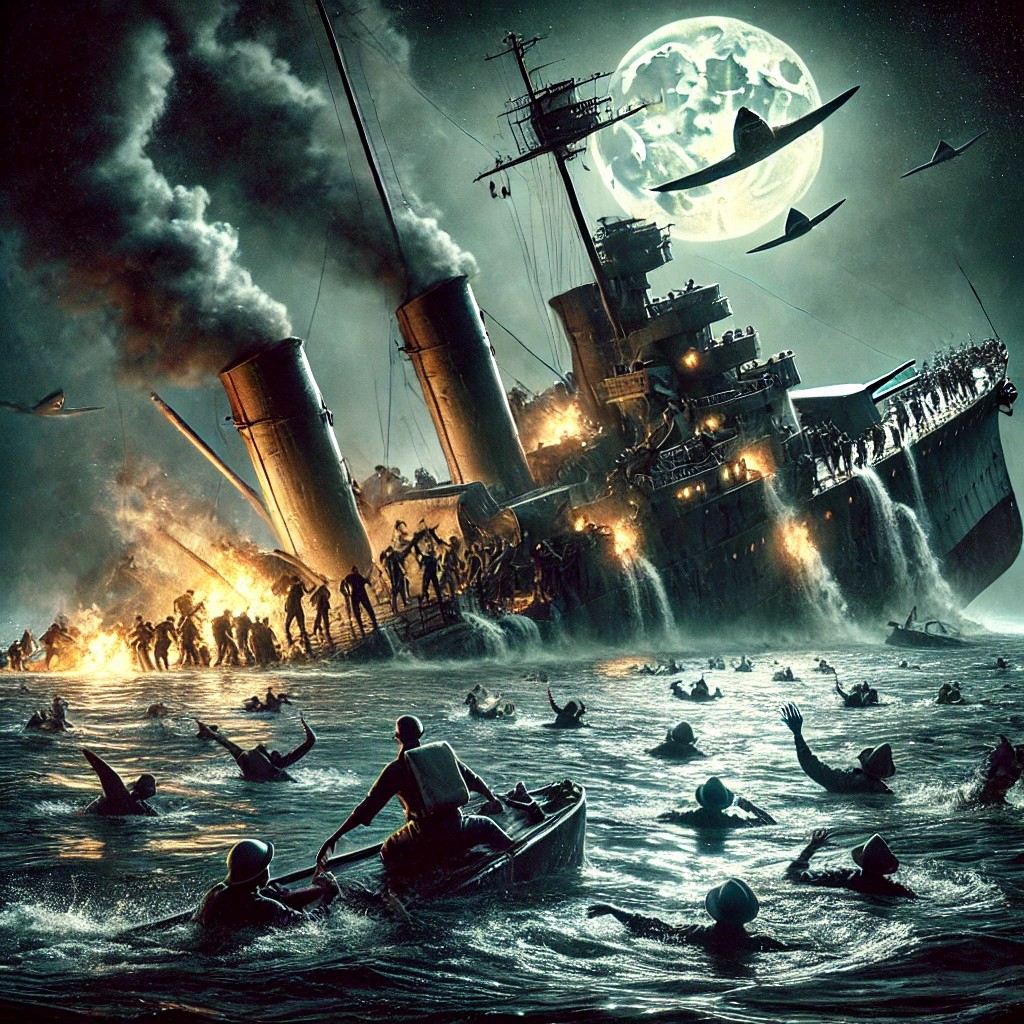The Sinking of the USS Indianapolis
A nightmare at sea

On 30 July 1945, the USS Indianapolis was hit by two Japanese torpedoes and sank in 12 minutes, killing 300 men. The 800 survivors drifted for four days without food or water, facing thirst, madness and one of the deadliest shark attacks in history - AI generated image
Among the dramas and numerous deaths of the Second World War, very few equalled the harrowing drama of the Sinking of the USS Indianapolis, a US Navy cruiser in the South Pacific. In July 1945 the USS Indianapolis was tasked with secretly transporting parts of the atomic bomb 'little boy' that would shortly be dropped on Hiroshima.
On 30 July 1945, a Japanese submarine intercepted the American ship and launched an attack with two torpedoes that struck with devastating effect. The ship broke in two and some 300 men died with it in 12 minutes. The remaining 800 survivors jumped into the water, trying to survive the perils of the Pacific Ocean as best they could. Over the next four days, the survivors had to survive in inhuman conditions. Without water or food, the minds of the survivors began to show signs of insanity.
Although the ship had sent an emergency signal before sinking, it was not taken seriously by the naval authorities and was interpreted as a false signal sent by the Japanese to confuse the Americans. So for more than four long days the survivors had to struggle against the force of the sea. A large group of sharks, having smelled the corpses and blood of the survivors began to attack the shipwrecked sailors and devour them en masse in what was considered to be one of the most serious shark attacks ever in history. Of the 800 sailors who jumped into the water, when rescue arrived after four days, around 300 had been devoured by the sharks and another 200 had died from dehydration or injuries.
One tactic used by the survivors to defend themselves against the sharks was to form groups of sailors closed in a circle and firmly clinging to each other to scare off the predators and induce them not to attack. They tended to attack at night or attack isolated individuals by dragging them away from their mates.
The sinking of the Indianapolis is still remembered today as a tragic episode in American history and as food for thought on the drama of war and the power of nature.
Doug Stanton. In Harm's Way: The Sinking of the USS Indianapolis and the Extraordinary Story of Its Survivors. New York: Henry Holt and Company, 2001.
Vincent Lynn, e Sara Vladic. Indianapolis: The True Story of the Worst Sea Disaster in U.S. Naval History and the Fifty-Year Fight to Exonerate an Innocent Man. New York: Simon & Schuster Ltd, 2018.
Toniatti Francesco
Master of Arts in International Relations - University of Leiden
Master of Arts in History and Oriental Studies - University of Bologna
Former History Teacher - International European School of Warsaw
2025-10-03
Francesco Toniatti
